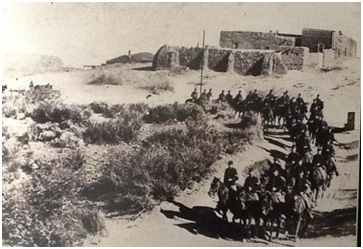Robert Burch on “Military Operations Out of State″

Bob’s presentation will focus on operations conducted by the California Volunteers during the Civil War in rough chronological order. Two battalions were first deployed to the Pacific Northwest to replace outbound Regular Army units joining the Army of the Potomac in late 1861. In early 1862 three regiments composed the famous California Column in its epic march across present-day Arizona and New Mexico into Western Texas during the heat of summer to assist repelling a Confederate invasion. This remains one of the classic marches in U.S. Army history in terms of organization and logical preparation. Later that same year another two regiments marched overland to Utah to defend the primary line of communications between California and the East. Finally, two regiments were concentrated in Southeast Arizona Territory to deter possible war with France as French forces occupied the Mexican state of Sonora in late 1864. Collectively these Volunteer units protected all U.S. territory west of the Rocky Mountains for nearly five years from outlaws, hostile Indians, and Confederate threats.
Bob Burch is a native Californian from Santa Clara County, a retired U.S. Army colonel and studied U.S. history with a concentration in U.S. military history at San Jose State University. He is also a graduate of the U.S. Army Command and General Staff College and War College. He is also a lifetime student of the American Civil War. He read his first Civil War book while in the fifth grade. He had the opportunity to visit all of the principle and most secondary Civil War sites from Florida to Pennsylvania to New Mexico during his 30-year military career, including multiple week-long visits to Gettysburg, his favorite battlefield site. Like most CWRT members, he desires to understand his home state’s role in the war. He collected material for this presentation for over ten years followed by several years of analysis. This series documents his research in great detail. Time allows only a key points to be presented. Numerous period photographs and magazine drawings are included for visual effect with the intent of comprehending California’s role in the Civil War.
